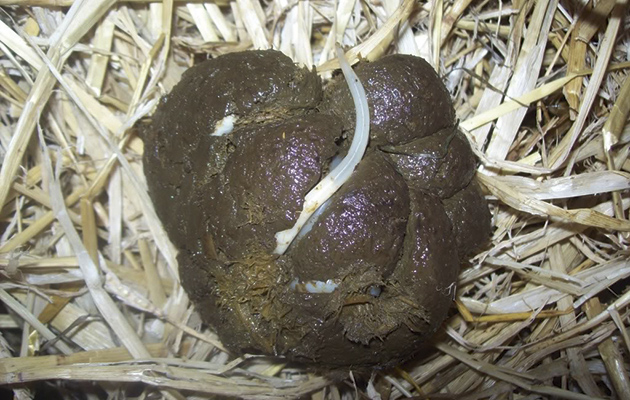Recent news about the re-emergence of pinworm as a parasitic problem has prompted a flurry of stories from owners who’ve spotted these unwelcome visitors around their horses’ hindquarters.
“They seem to be this year’s must-have accessory for the discerning equine,” says Leila Mitcham, who first suspected infestation when she noticed some uncharacteristic tail swishing by her thoroughbred gelding, Beau. “I’ve been involved with horses for more than 30 years, but have never come across a case of pinworm.”
Leila’s three horses mainly live out on 4.5 acres of grazing that is poo-picked daily. Each is wormed for encysted redworm and tapeworm and has a regular faecal egg count, so it surprised Leila to discover that pinworms were in effect living “under the radar”.
The pinworms flourished unnoticed because their eggs are laid around the anus area and not expelled in dung, and are therefore not detected in faecal egg counts.
Upon closer inspection, Leila noticed telltale yellow dots under Beau’s tail — pinworm eggs. She then spotted an adult female worm emerging from his anus.
“Beau was the only one to show any signs,” she says.
This lack of visible evidence is another reason why pinworms tend to be overlooked. Perianal pruritis (itching of the tail) can be a giveaway, but clinical signs may appear in only a small percentage of horses.
And while young horses have been considered most at risk, this is no longer so.
“There are numerous reports of clinical signs in mature adult and geriatric horses,” says Edd Knowles MRCVS, adding that a much broader age range is now thought to be vulnerable.
Pinworm presence in Leila’s horses — two thoroughbreds aged 22 and a five-year-old cob — would seem to confirm this.
A persistent problem
How worried should we be about these low-profile parasites?
Aside from the discomfort caused by itching, possible tail-wrecking and consequential behavioural changes, a sizeable burden can apparently cause more serious problems.
“Pinworm have also been blamed for causing some types of colic by causing inflammation of the colon and caecum,” warns Edd.
Leila’s horses are now undergoing a treatment programme aimed at eradicating the internal worm burden. But Edd says that pinworm are showing resistance to some wormers.
“The continued presence or rapid reappearance of eggs despite repeated treatment was found in mature horses in Germany,” he says. “Egg shedding ceased only after subsequent mebendazole treatment. In the US and New Zealand, adult pinworms that had survived treatment with ivermectin/abamectin were killed only by pyrantel or oxfendazole.
“If you do suspect pinworm, consult your vet to put together a thorough treatment plan,” Edd advises. “If signs persist following treatment, a different class of wormer may be necessary.”
Ref: Horse & Hound; 29 October 2015
